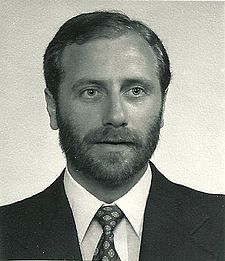Luc-Normand Tellier
| Luc-Normand Tellier | |
|---|---|
 |
|
| Born |
10 October 1944 Montreal, Quebec, Canada |
| Nationality | Canadian |
| Institution | Université du Québec à Montréal |
| Field | Regional science, economics |
| Alma mater | Université de Montréal, University of Pennsylvania |
Luc-Normand Tellier (born October 10, 1944) is a Professor Emeritus in spatial economics of the University of Quebec at Montreal.
After having taught for two years (1964–1966) at the Collège Saint-André of Kigali, Rwanda, as a Canadian Peace Corps (CUSO/SUCO) volunteer, Tellier studied both economics and city planning. He obtained a bachelor's degree in Economics (1968) and a master's degree in City planning (1971) from the University of Montreal, as well as a master's degree (1971) and a Ph.D. (1973) in Regional science from the “Ivy League” University of Pennsylvania. Later, he taught urban economics at the “Institut d’urbanisme” of the University of Montreal before founding, in 1976, the Department of Urban Studies and Tourism of the University of Quebec at Montreal. He was chairman of that department for 13 years, as well as, from 1981 to 1983, the director of the “Urbanisation” research center of the Institut National de la Recherche Scientifique (INRS). He was granted the title of “Professor Emeritus” of the University of Quebec at Montréal in 2012.
In 1971, he found the first direct (non iterative) numerical solution of the Fermat and Weber triangle problems. Long before Von Thünen’s contributions, which go back to 1818, the Fermat triangle problem can be seen as the very beginning of space economy. It was formulated by the famous French mathematician Pierre de Fermat before 1640. More than 330 years later, it still had no direct numerical solution. As for the Weber triangle problem, which is a generalization of the Fermat triangle problem, it was first formulated by Thomas Simpson in 1750, and popularized by Alfred Weber in 1909. In 1971, that problem still had no direct numerical solution. The Fermat triangle problem consists in locating a point D with respect to three points A, B, and C in such a way that the sum of the distances between D and each of the three other points is minimized. As for the Weber triangle problem, it consists in locating a point D with respect to three points A, B, and C in such a way that the sum of the transportation costs between D and each of the three other points is minimized.
...
Wikipedia
